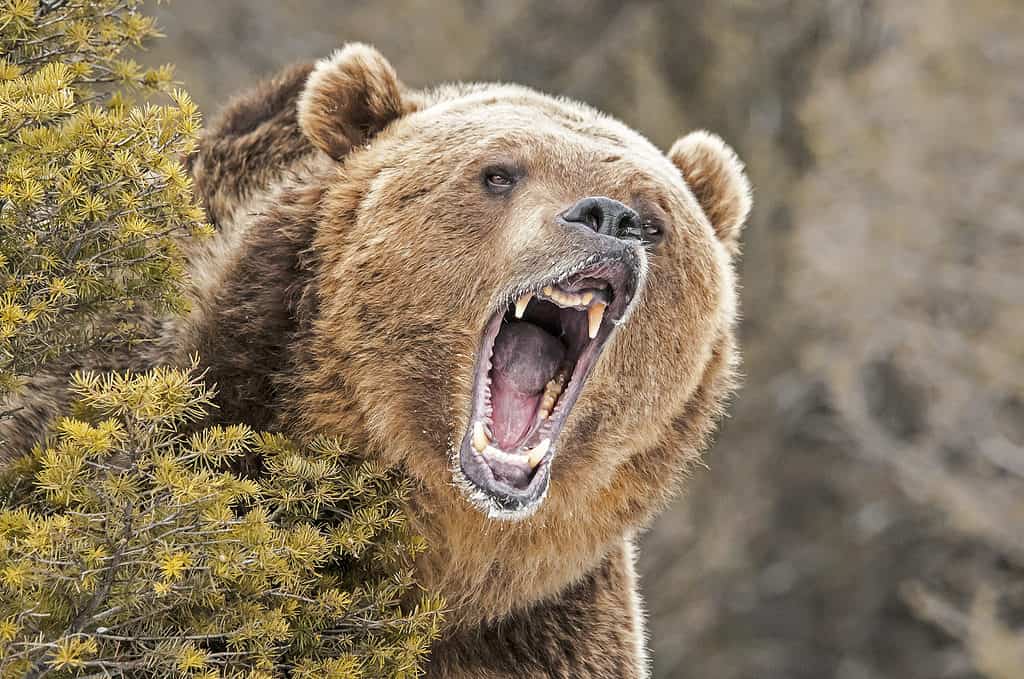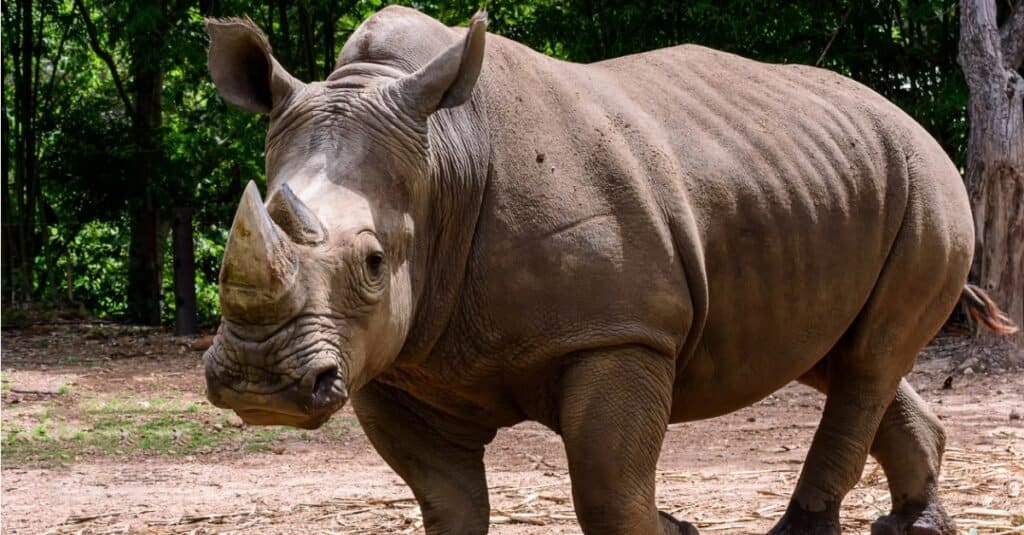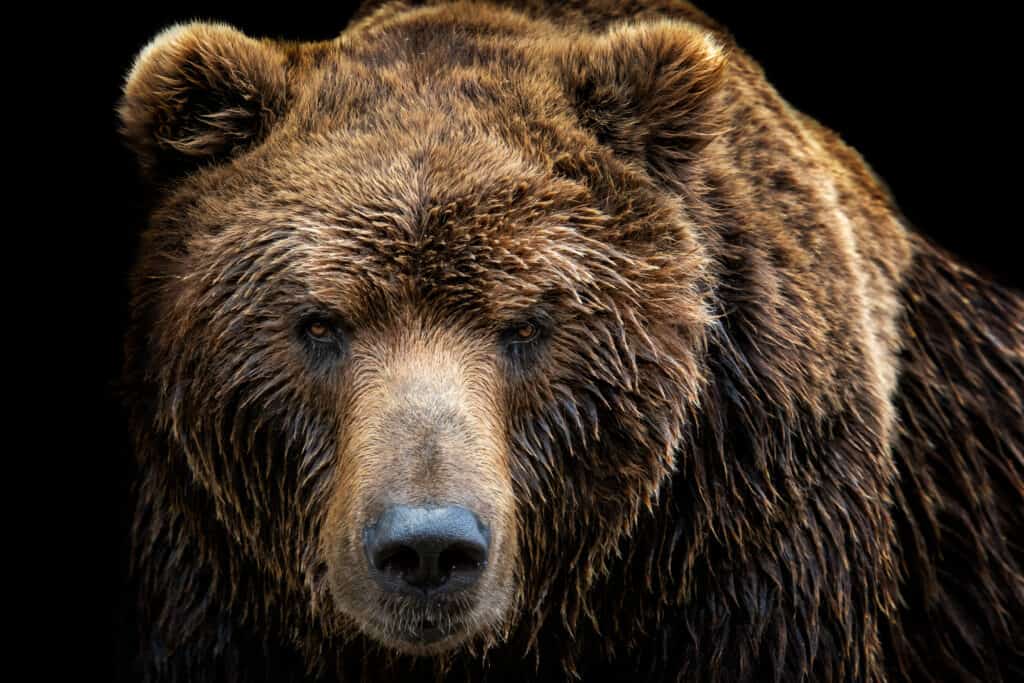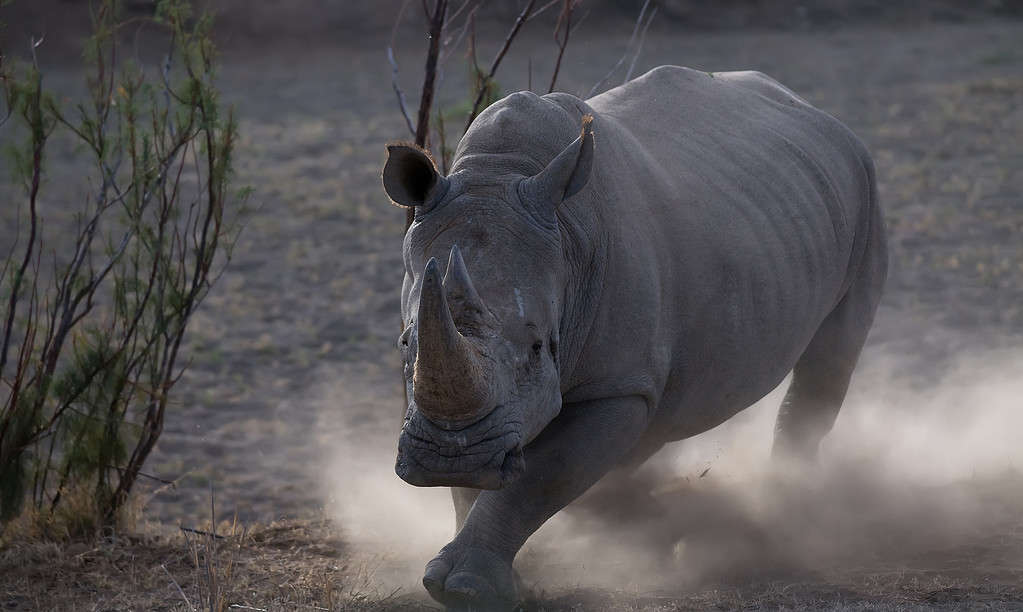The grizzly bear and rhinoceros are two of the most powerful animals living in nature today. One is an immense land mammal with a thick hide and sharp horns that can reduce trees to splinters. The other is a formidable predator of the wild, armed with claws and teeth that can tear through flesh. But who would win when you think about a grizzly Bear vs. Rhino?
Both creatures have thick hides, sharp claws, and immense strength, making them formidable opponents when facing off against each other. But who would come out the victor if these two beasts were to fight?
That’s precisely what we plan to discover in this article; let’s deep dive into the characteristics of both the grizzly bear and the rhinoceros to compare their strengths, weaknesses, and battle tactics.
By its end, we’ll better understand who would win in a hypothetical fight between these two mighty beasts.
Key Differences Between a Grizzly Bear and a Rhinoceros

The grizzly bear (
Ursus arctos) is one of the largest land mammals in North America.
©Scott E Read/Shutterstock.com
First, it’s important to note the key difference between these two amazing animals.
Grizzly bears and rhinoceros are two of the most influential animals in the animal kingdom. While both have large, impressive bodies and can be intimidating to humans, they differ in many ways. Their key differences may be crucial in determining the victor of their hypothetical battle.
The grizzly bear (Ursus arctos) is one of the largest land mammals in North America. They typically weigh up to 900 pounds and boast brown fur, a humped back, long claws, and omnivorous dietary habits. They usually live alone or in small family groups in forested areas of North America, Europe, Asia, and Alaska.
Meanwhile, the rhinoceros (Rhinocerotidae) is an herbivore sporting thick skin and horns on its snout that primarily lives in savannas (African & Asian), swamps, and shallow floodplains.
Size and Appearance
The most significant difference between a grizzly bear and a rhinoceros is size. Grizzly bears can weigh 900 pounds, while rhinos can weigh up to 8,000 pounds! So through sheer force alone, the rhino could easily defeat a grizzly bear.
Strengths and Weaknesses

On average, rhinos grow 11 to 15 feet long, while grizzly bears typically reach 7 to 10 feet.
©iStock.com/nuwatphoto
Grizzly bears also have a typical lifespan of about 25 years in the wild, while rhinos can live for up to 40-50 years. Moreover, grizzly bears have sharp claws and teeth that they use to tear through their prey, while rhinos rely solely on their horns for protection and offensive means.
Grizzly bears are well adapted to various climates, including mountainous and coastal areas. Conversely, rhinos prefer living in tropical or subtropical climates, as they are less tolerant of cold temperatures. So, where the fight occurs may make a difference in who emerges victorious at the end of the day.
There are many differences between grizzly bears and rhinos, which makes determining which would win a fight difficult. The battle’s outcome relies on many variables: size, strength, agility, experience, and environment.
Key Factors in a Fight Between a Grizzly Bear and a Rhinoceros
Every fight is different, and many factors can affect the outcome. Size, speed, aggression, and defense mechanisms vary between species and individuals, so it’s impossible to say with certainty which animal would win a fight between a grizzly bear and a rhinoceros without seeing them in action. And hopefully, no one will have to witness such a gruesome fight!
Grizzly Bear vs. Rhino: Size

Grizzly bears usually weigh between 400 to 900 pounds and stand 3 to 5 feet tall.
©Lubos Chlubny/Shutterstock.com
The rhinoceros has a clear size advantage over the grizzly bear in a fight. The average adult rhino can weigh between 3,000 and 8,000 pounds and stands 4 to 6 feet high at the shoulder, while grizzly bears usually weigh between 400 to 900 pounds and stand 3 to 5 feet tall.
The size difference can be seen even in the length of each animal. On average, rhinos grow 11 to 15 feet long, while grizzly bears typically reach 7 to 10 feet. Of course, there are always exceptions to these averages, with some rhinos reaching a weight of 9,000 pounds and grizzly bears growing as large as 1,200 pounds!
Regarding protection from attacks, the size of a rhino gives them an obvious advantage. Their thick skin is difficult to penetrate, and their large horns are powerful when defending themselves against predators.
Grizzly Bear vs. Rhino: Speed
When it comes to speed, bears are ever-so-slightly faster than rhinos. A grizzly bear can achieve a top running speed of around 35 miles per hour, whereas an adult black rhino typically achieves 25 to 34 miles per hour. And an adult white rhino tends to be a bit slower, reaching only a top speed of 31 miles per hour.
Grizzly bears can climb trees and swim in rivers, giving them an advantage in terms of mobility. Rhinos cannot compete with this level of agility due to their sheer size.
Bears have muscular legs that give them the power to maintain their speed over long distances, even if the terrain is hilly or challenging. This difference in speed and agility gives bears an advantage over rhinos regarding endurance. So, the longer the fight, the better chance the grizzly may have against the mighty rhino.
Grizzly Bear vs. Rhino: Aggression

An adult white rhino can reach 31 miles per hour.
©Chris Twine/Shutterstock.com
The grizzly bear is an apex predator known for being aggressive when protecting their cubs. They can also be very territorial, especially during mating season. They attack humans when provoked or if their food source is threatened.
The rhino’s natural instinct is to flee from danger rather than fight, but they can become highly aggressive if provoked or threatened. When angered, a rhino will forcefully charge its opponent and use its horns to defend itself. Female rhinos with young calves are incredibly aggressive and will use their horns to protect their offspring at all costs.
Grizzly Bear vs. Rhino: Defense Mechanisms
Rhinos have thick skin that is difficult to penetrate and long horns that can be used to defend themselves. Bears rely more heavily on their claws and teeth for defense in a fight. Bears are also known for their ability to stand up on two feet to gain a height advantage against predators and potential attackers.
While the grizzly bear’s natural defense mechanisms are effective, they cannot compare to the rhino’s natural guards, making it difficult to wage a successful fight against rhinos.
Grizzly Bear vs. Rhino: Offensive Capabilities
Rhinos have the physical strength to push and shove with their horns, which can be deadly if they can unbalance or knock down their opponent. On the other hand, bears fight with claws and teeth, making them better suited for close-range combat but less effective when engaging in long-range battles.
Both animals use their physical strength and unique abilities to protect themselves while taking down potential threats. Whether they choose to charge, maul, or bite, the offensive capabilities of both grizzly bears and rhinos are formidable.
Advantageous Terrain

a Rhino’s thick skin and long horns make it difficult for predators to penetrate, while its powerful charge can cause severe damage to an attacker.
©bekirevren/Shutterstock.com
Grizzly bears typically inhabit areas with thick vegetation and forest cover, where they can hide from predators. On the other hand, rhinos are used to living on the grassy plains and open savannas, where it is difficult for them to hide from their prey. This gives a considerable advantage to the grizzly bear in any fight, as it can hide and ambush its opponent.
Grizzly bears also have an advantage if the terrain is hilly or mountainous since they can climb trees more easily than a rhino could; however, if the terrain is flat, the rhino has an advantage as it can charge faster and more powerfully.
Which Animal Would Win The Fight?
The advantage would likely go to the rhino in a fight between a grizzly bear and a rhino. Its thick skin and long horns make it difficult for predators to penetrate, while its powerful charge can cause severe damage to an attacker.
Bears may have the physical strength needed to take down prey, but their lack of armor, in comparison, puts them at a disadvantage in this fight. The rhino’s natural armor and offensive capabilities would be too much for the grizzly bear, making it the victor of a possible battle among them.
The photo featured at the top of this post is ©
Thank you for reading! Have some feedback for us? Contact the AZ Animals editorial team.






